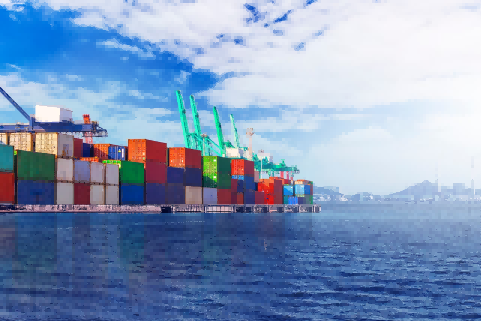 Import News
Import News
 2023-07-05
2023-07-05
In this article, Tendata will explore the fundamental difference between imported and exported, shedding light on their significance and how they contribute to the global economy. Understanding the distinction between these two terms is crucial for businesses engaged in international trade, as it influences their strategies, operations, and overall success in the marketplace.

Definition and Concept:
The difference between imported and exported lies in their direction and purpose. Importing refers to the process of bringing goods or services into a country from abroad for domestic consumption or use. On the other hand, exporting involves sending goods or services produced within a country to other countries for their consumption or use. In essence, import is the act of acquiring goods from foreign markets, while export is the act of selling goods to foreign markets.
Economic Significance:
The difference between imported and exported goods has significant implications for a country's economy. Imports allow countries to access goods and services that are not readily available domestically or are more cost-effective to obtain from foreign markets. This expands the variety of products available and promotes healthy competition, benefiting consumers with more choices and potentially lower prices. On the other hand, exports contribute to a country's economic output, generating revenue, creating job opportunities, and fostering industry growth.
Balance of Trade:
Understanding the difference between imported and exported goods is closely tied to the concept of the balance of trade. The balance of trade measures the difference in value between a country's exports and imports over a specific period. When a country's exports exceed its imports, it experiences a trade surplus, indicating a positive balance of trade. Conversely, if a country's imports exceed its exports, it encounters a trade deficit, indicating a negative balance of trade. The balance of trade is a key indicator of a country's economic competitiveness and its trade relationships with other nations.
Trade Policies and Regulations:
Distinguishing between imported and exported goods is crucial due to the trade policies and regulations that govern international trade. Governments implement these policies to protect domestic industries, ensure fair competition, and maintain national security. They include import tariffs, quotas, trade agreements, and customs procedures. Businesses engaged in import and export activities must understand and comply with these regulations to avoid legal complications and maximize their trade opportunities.
Market Dynamics and Comparative Advantage:
Understanding the difference between imported and exported goods involves recognizing market dynamics and a country's comparative advantage. Comparative advantage refers to a country's ability to produce certain goods or services more efficiently or at a lower cost than other countries. Countries often specialize in producing and exporting goods that align with their comparative advantage, while importing goods that other countries can produce more efficiently. This specialization allows for increased productivity, higher-quality goods, and overall economic growth.
Impact on Domestic Industries:
The difference between imported and exported goods significantly impacts domestic industries. Imports provide access to foreign goods and technologies, allowing domestic businesses to complement their offerings, enhance competitiveness, and meet consumer demands. However, imports can also pose challenges to domestic industries, particularly when facing intense competition from cheaper or higher-quality imported goods. On the other hand, exports create opportunities for domestic industries to expand their markets, increase production, and drive innovation.
Foreign Exchange and Balance of Payments:
The difference between imported and exported goods affects a country's foreign exchange and balance of payments. Importing goods or services requires the use of foreign currency to make payments. Conversely, exporting goods or services generates foreign currency. The balance of payments reflects the overall flow of funds into and out of a country, including imports, exports, foreign investments, and other financial transactions. Maintaining a favorable balance of payments is crucial for a country's economic stability and its ability to meet international obligations.
Conclusion:
In conclusion, the difference between imported and exported goods lies in their direction and purpose. Importing involves acquiring goods or services from foreign markets for domestic use, while exporting involves selling goods or services produced within a country to foreign markets. Understanding this distinction is essential for businesses and policymakers engaged in international trade. By recognizing the economic significance, trade policies, market dynamics, and impact on domestic industries, businesses can develop effective strategies to navigate the complex landscape of import and export activities.
Category
Leave Message for Demo Request or Questions


 T-info
T-info T-discovery
T-discovery

 My
Tendata
My
Tendata Market Analysis
Market Analysis Customer
Development
Customer
Development Competitor
Monitoring
Competitor
Monitoring Customer Relationship
Customer Relationship





































































































































